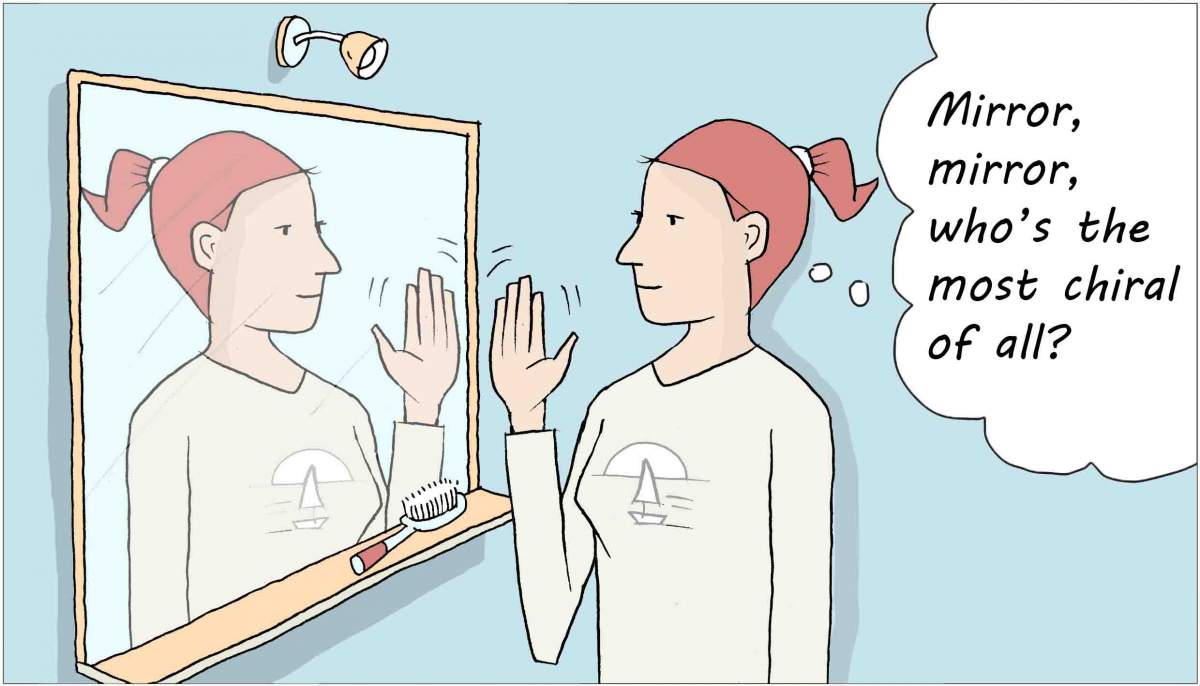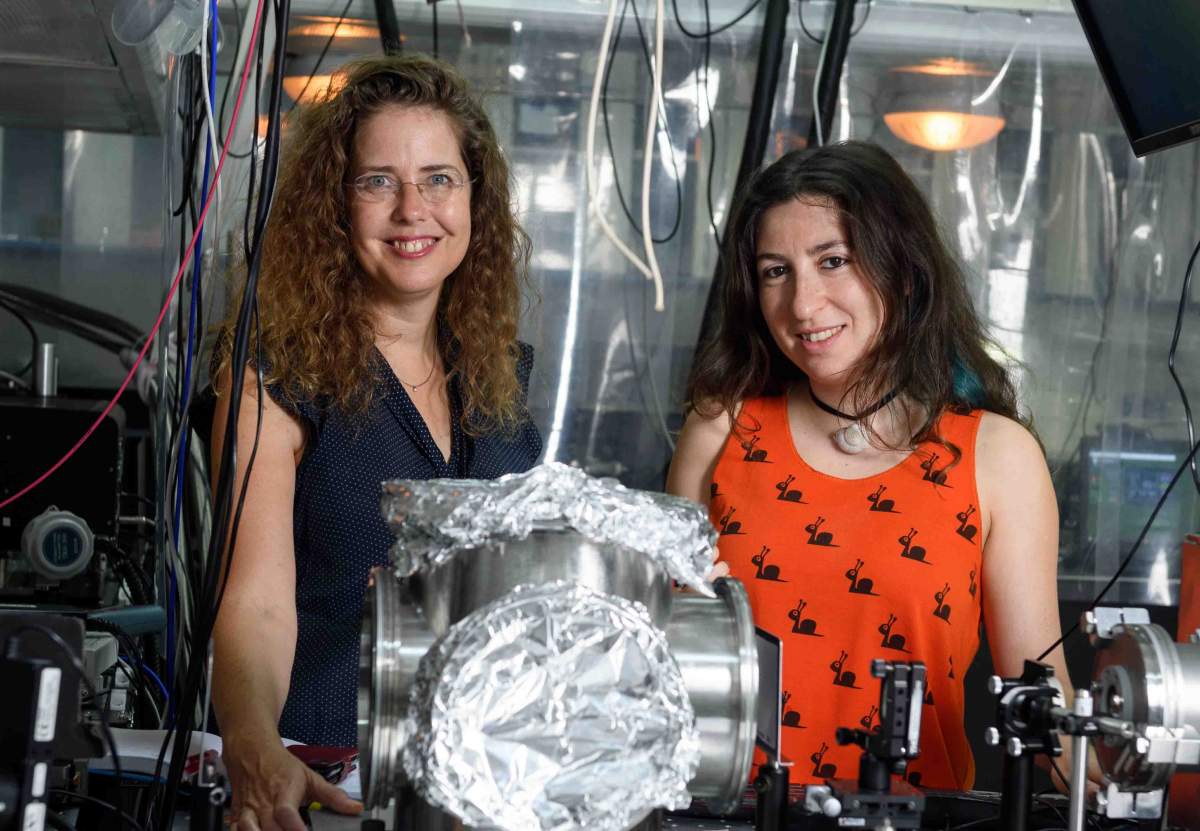Are you a journalist? Please sign up here for our press releases
Subscribe to our monthly newsletter:

How long does it take to sort chiral molecules – those that come in “left-handed” and “right-handed” versions? For example, a common method involves using light with circular polarization. The light ionizes the molecules – causing them to emit electrons. Depending on the chirality of the molecules, these electrons may be pulled in different directions by the circling light – in measurable amounts that can reveal the structural and spatial organization of the molecule. This has been compared to rotating a nut on a bolt with or against the direction of the threads. But the time it takes for the chiral interaction to evolve had not been resolved.
Prof. Nirit Dudovich and her group in the Physics of Complex Systems Department in the Weizmann Institute of Science, working with the groups of Profs. Valerie Blanchet and Yann Mairesse in the University of Bordeaux, France, asked the following question: What is the shortest time over which this chiral interaction can evolve? This goes to the heart of questions about the length of time it takes for light to interact with matter and for electrons to be emitted. Or, in the case of circular, polarized light: How many rotations are needed to establish the chiral interaction? Is it more than one, or can it be obtained in less than a full rotation, that is, a narrower part of the circle, for example, a half-circle? Is a tenth or a hundredth of the rotation sufficient to the task?
The technique the group invented was technologically a bit complex, but it did provide an answer. The challenge, explains Dudovich, is that to catch a very quick phenomenon, one needs an even faster way to measure it, and if the arc of the circle is small, one must measure it with an arc that is even smaller.
They created a unique pulse of light with reversible polarization: Twisted into a figure 8 rather than a circle, the polarization flipped directions, from clockwise to counterclockwise and back, within each cycle. They then tested this light pulse on chiral molecules to see whether the flip in polarization would cancel out the asymmetrical electron emission, which is the signature of the chiral response ‒ or whether the emission would take place within less time than a full cycle.

In fact, the group found that the commonly observed response ‒ antisymmetric electron emission ‒ flips its direction every half cycle of the laser. In other words, a half cycle was sufficient for some of the ionized electrons to be emitted in a particular direction (and move far enough away that they were not affected by changes in the light pulse). The electrons responded to either the top or the bottom loops of the figure 8, depending on the chirality of the molecules. Electrons which responded to the upper and lower halves of the 8 moved up or down respectively, allowing the detection of the opposite responses to the rotation of the light.
All of this took place within a few hundreds of attoseconds (an attosecond is a billionth of a billionth of a second), and the study showed, for the first time, that chirality can be measured in these very short periods of time – up to a few hundred attoseconds. Among other things, the technique may offer a way to observe the changes that occur in chiral molecules during fast chemical reactions, as well as to provide some insights into the ways that right- and left-handed molecules can be the same, yet very different. This research was published in Physical Review X.
Prof. Nirit Dudovich's research is supported by the Helen and Martin Kimmel Award for Innovative Investigation; the Benoziyo Endowment Fund for the Advancement of Science; the Crown Photonics Center; the Jay Smith and Laura Rapp Laboratory for Research in the Physics of Complex Systems; the Wolfson Family Charitable Trust; the Jacques and Charlotte Wolf Research Fund; and the estate of Raymond Lapon. Prof. Dudovich is the incumbent of the Robin Chemers Neustein Professorial Chair.